Dear Stan! |
|||
 |
Nihonto ClubJapanese Sword Information Exchange |
User login |
|
|
Disclaimer: Nihontō Club owners and independent contributors will not be held responsible for any loss, damage or inconvenience caused as a result of any inaccuracy or error within this website. Except where otherwise noted, this page is licensed under a Creative Commons License.
|
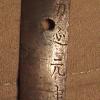
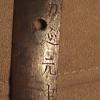
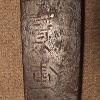
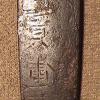
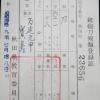

unusual name?
Hi,
The 1st 4 kanji are are a date: "1st year of Man'en (1860)".
The name seems unusual. The first kanji is "hou", or "takara" (in a kanji dictionary - that is NOT how the name is likely to be read). In the old Nelson dictionary, it is #1293.
The second kanji is "kotobuki", often read as "toshi".
Pete
takatoshi or houju
Update:
My wife says the reading of the name is most likely either "takatoshi" or "houju".
Pete
Hōju
Hi Oliver,
It's an interesting one. I totally agree with Pete that the first 4 Kanji is "the first year of Man'en". The name on the cert is indeed Hōju 寳壽 (or 宝寿 like they write it in modern books). You may find few Hōju here.
However, none of them lived around 1860 (I checked Meikan and Toko Taikan). The closest date is 1830. Also, it's hard to judge the colour and the texture of nakago using photos, but if the side with date looks 1860, the side with the name feels older. Full photo of nakago would give a better impression.
Here's what Fujishiro writes about the older Hōju:
HÔJÛ YONEZAWA [BUNSEI 1818 UZEN] SHINSHINTÔ CHÛJÔSAKU
He is the son of Kunihide, and he was bestowed with this name because he comes from the last of the line of the Hôjû smiths of the kotô period. His style is like that of Chôunsai Tsunatoshi.
Signatures:
YONEZAWA JÛ KATÔ HÔJÛ
HÔJU
There's another Hōju attributed to Shinshintō period in Hawley, but there is too little information to judge.